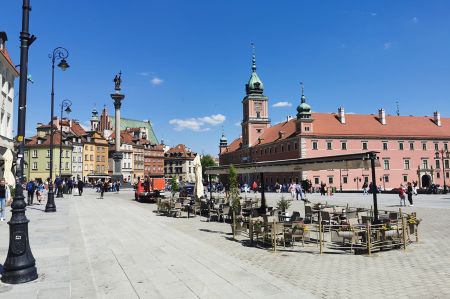Hiking Tour of Warsaw's Old Town
- Written by Portal Editor
As already described in the article "Off to the city centre of Warsaw", we first took public transport to the Palace of Culture and then walked along the so-called "Royal Route" to the old town.
Of course, the streets were better footpaths along the streets and in the parks that we had crossed already heavily populated due to the wonderful weather and that should also remain the case in the city centre, of course because the rebuilt old town is always worth a visit.
Destruction by Nazi Germany and reconstruction
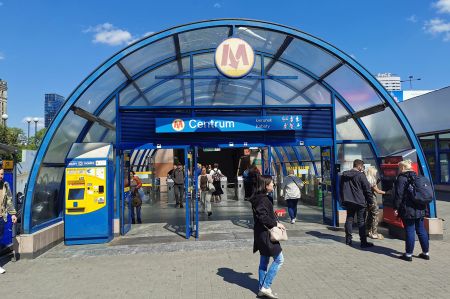 As early as February 14, 1945, the Office for the Reconstruction of the Capital was established in Warsaw, because the reconstruction could use pre-war survey drawings saved in the archive of the Faculty of Architecture of the Polytechnic. Detailed city views from the 18th century by Bernardo Bellotto, known as Canaletto, were used for the facade reconstructions.
As early as February 14, 1945, the Office for the Reconstruction of the Capital was established in Warsaw, because the reconstruction could use pre-war survey drawings saved in the archive of the Faculty of Architecture of the Polytechnic. Detailed city views from the 18th century by Bernardo Bellotto, known as Canaletto, were used for the facade reconstructions.
From 1945 to 1947 the ruins of town houses around the market square were cleared of rubble. At the same time archaeological excavations were carried out. Fragments of Gothic brick walls and even whole pointed arches appeared under the crumbling plaster. In 1949 the rebuilt houses on the north side of the Market Square were given to the Warsaw Historical Museum and the fallen Sigismund Column was rebuilt. The construction of the new east-west road, which runs along the edge of the old town, began in 1948.
It was guided in the tunnel next to the Schlossplatz without collision or noise.
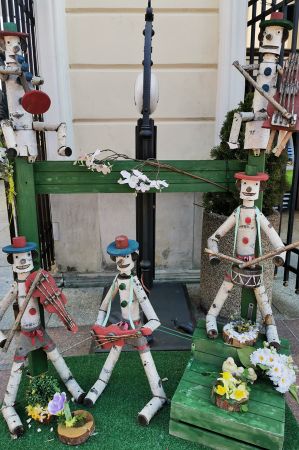 Already in September 1939 the royal castle had been hit by aerial bombs, partially burning out. At the risk of their lives, art historians tried to save architectural details and furnishings of the palace for future reconstruction.
Already in September 1939 the royal castle had been hit by aerial bombs, partially burning out. At the risk of their lives, art historians tried to save architectural details and furnishings of the palace for future reconstruction.
During the Warsaw Uprising in 1944, the old town was heavily fought over. Many houses collapsed in the hail of bombs.
After the defeat of the Polish Home Army, the entire surviving population was expelled, and SS units in the deserted city destroyed the remaining buildings with flamethrowers and explosive devices.
The royal palace, which burned out in 1939, was also completely destroyed in 1944.
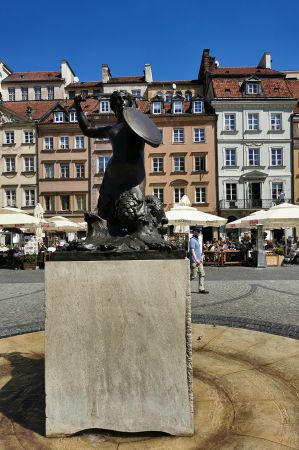 The Warsaw residents who returned after the final liberation on January 18, 1945 found almost nothing but uninhabitable ruins. Of the 957 pre-war buildings classified as historic, 782 were completely destroyed and 141 partially destroyed. The massive ground floor walls were still standing in the old town, but many of the upper floors had collapsed. But reconstruction soon began.
The Warsaw residents who returned after the final liberation on January 18, 1945 found almost nothing but uninhabitable ruins. Of the 957 pre-war buildings classified as historic, 782 were completely destroyed and 141 partially destroyed. The massive ground floor walls were still standing in the old town, but many of the upper floors had collapsed. But reconstruction soon began.
First, about 100,000 mines had to be defused. The easiest way would have been to clear the ruins and build new houses in series. But the decision was made to restore the old town and the royal castle almost exactly to the original. They should represent a sign of triumph over the occupying forces.
The reconstruction was led by Jan Zachwatowicz.
Historical background to the old town of Warsaw
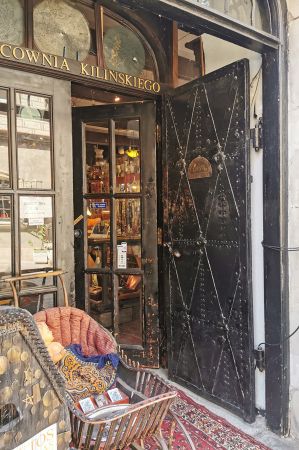 In the 13th century, Warsaw's Old Town was built not far from the Vistula bank, above a steep embankment and next to the castle of the Mazovian princes, which was also built in the 13th century. The city was initially surrounded by an earth rampart, at the end of the 14th century a city wall made of brick was built. The city consisted of a square market square and a network of streets perpendicular to each other.
In the 13th century, Warsaw's Old Town was built not far from the Vistula bank, above a steep embankment and next to the castle of the Mazovian princes, which was also built in the 13th century. The city was initially surrounded by an earth rampart, at the end of the 14th century a city wall made of brick was built. The city consisted of a square market square and a network of streets perpendicular to each other.
There were three churches within the city walls: St. John's Cathedral, later St. Martin's Church and Jesuit Church. A town hall was erected in the middle of the market square. Warsaw was declared a princely seat in 1413. As a result, the city wall was doubled and a moat was dug. There were two city gates: the Kraków Gate from the south and the New Town Gate with a rondel from the west. At the Kraków Gate, close to the embankment, was the prince's seat in a rectangular Gothic building.
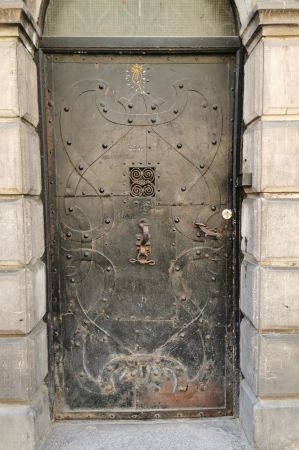 1611 raised the Polish king Sigismund III. raised Warsaw to the capital of Poland. The city also developed rapidly outside the city walls, especially in a southerly direction along the Vistula. Magnificent palaces and town houses were built, but the old town remained almost unchanged. The old princely residence became a pentagonal royal palace. Between 1643 and 1644 the monument to Sigismund III was erected on the Castle Square next to the Kraków Gate. At the end of the 18th century, the palace received a decorative east facade in the style of the Saxon Baroque. The other facades remained sparsely decorated. In 1815, after the Third Partition of Poland, Warsaw came under Russian rule as the capital of Congress Poland, which was linked to the Tsarist Empire by a personal union. After the failed uprising in 1831 and the abolition of autonomy, it became a Russian provincial city. At that time, the old town degenerated into a slum. The town hall was demolished and the city walls were rebuilt with tenements and partially demolished.
1611 raised the Polish king Sigismund III. raised Warsaw to the capital of Poland. The city also developed rapidly outside the city walls, especially in a southerly direction along the Vistula. Magnificent palaces and town houses were built, but the old town remained almost unchanged. The old princely residence became a pentagonal royal palace. Between 1643 and 1644 the monument to Sigismund III was erected on the Castle Square next to the Kraków Gate. At the end of the 18th century, the palace received a decorative east facade in the style of the Saxon Baroque. The other facades remained sparsely decorated. In 1815, after the Third Partition of Poland, Warsaw came under Russian rule as the capital of Congress Poland, which was linked to the Tsarist Empire by a personal union. After the failed uprising in 1831 and the abolition of autonomy, it became a Russian provincial city. At that time, the old town degenerated into a slum. The town hall was demolished and the city walls were rebuilt with tenements and partially demolished.
In 1918 Warsaw again became the capital of an independent Polish state. The old town was renewed as a tourist destination, the town houses on the market square were decorated in 1928 by well-known painters. The city walls were partially freed from the tenements and renovated. The former royal castle became the residence of the Polish President in 1926.
Official opening of Warsaw's Old Town on July 22, 1953
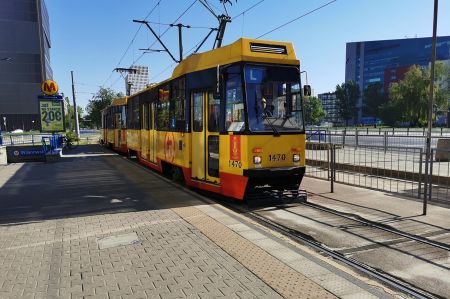 On July 22, 1953, Warsaw's Old Town was inaugurated. The houses largely retained the original appearance, but inside small apartments were furnished according to the standards of the time.
On July 22, 1953, Warsaw's Old Town was inaugurated. The houses largely retained the original appearance, but inside small apartments were furnished according to the standards of the time.
Some apartments were made available to well-known artists. Some areas, such as Ulica Nowy Świat (New World Street), which before the war often had four or five floors, were reduced to two-story buildings and thus acquired a small-town character.
Buildings of historicism and art nouveau that are valuable from today's perspective were deliberately sacrificed in part.
The reconstruction of the old town was only finally completed around 1955.
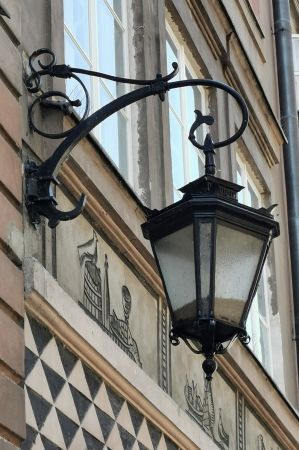 However, the reconstruction of the royal palace was postponed indefinitely due to a lack of funds. The rubble was cleared away, the foundations filled in with earth and covered with turf. When the new party secretary, Edward Gierek, came to power in 1971, he proposed fundraising for reconstruction from donations, earning him widespread but short-lived sympathy. The reconstruction lasted about 17 years. The details saved in 1939 were reused. Today, works of art from the old collections are exhibited in the Royal Castle, including the vedute of the city by Bernardo Bellotto, which was very important for the reconstruction of Warsaw, as well as newly donated art objects. The Kubicki arcades at the foot of the castle form the reception hall for visitors and are connected to the ground floor with an escalator.
However, the reconstruction of the royal palace was postponed indefinitely due to a lack of funds. The rubble was cleared away, the foundations filled in with earth and covered with turf. When the new party secretary, Edward Gierek, came to power in 1971, he proposed fundraising for reconstruction from donations, earning him widespread but short-lived sympathy. The reconstruction lasted about 17 years. The details saved in 1939 were reused. Today, works of art from the old collections are exhibited in the Royal Castle, including the vedute of the city by Bernardo Bellotto, which was very important for the reconstruction of Warsaw, as well as newly donated art objects. The Kubicki arcades at the foot of the castle form the reception hall for visitors and are connected to the ground floor with an escalator.
We've gotten a little hungry and are looking for something appropriately Polish from the wide range on offer, which we quickly find: pirogi and bigos.
 The typical Polish Maultaschen are undeniably delicious and are a must when visiting Warsaw. The variety of possible fillings is huge, from savoury to sweet. Some of the most popular include cabbage and mushrooms, ground beef or cottage cheese, and potatoes (pierogi ruskie). Usually topped with melted butter or traditional Polish onion and lard cracklings and served with sour cream, pierogi are not only delicious but also very filling.
The typical Polish Maultaschen are undeniably delicious and are a must when visiting Warsaw. The variety of possible fillings is huge, from savoury to sweet. Some of the most popular include cabbage and mushrooms, ground beef or cottage cheese, and potatoes (pierogi ruskie). Usually topped with melted butter or traditional Polish onion and lard cracklings and served with sour cream, pierogi are not only delicious but also very filling.
Bigos is much more appetizing than it first appears, as it is sauerkraut with minced meat cooked with Polish spices. A perfect dish to fill you up and keep you warm, this stew is best eaten with a slice of sourdough bread.
Please read as well:
Lucky Troubles – Blues during Caravaning Festival Warsaw
Paddling on the Unstrut - from Roßleben to Kirchscheiden
-
 Hiking Warsaw Old Town
Hiking Warsaw Old Town
Hiking Warsaw Old Town
Hiking Warsaw Old Town
-
 Hiking Warsaw Old Town
Hiking Warsaw Old Town
Hiking Warsaw Old Town
Hiking Warsaw Old Town
-
 Hiking Warsaw Old Town
Hiking Warsaw Old Town
Hiking Warsaw Old Town
Hiking Warsaw Old Town
-
 Hiking Warsaw Old Town
Hiking Warsaw Old Town
Hiking Warsaw Old Town
Hiking Warsaw Old Town
-
 Hiking Warsaw Old Town
Hiking Warsaw Old Town
Hiking Warsaw Old Town
Hiking Warsaw Old Town
-
 Hiking Warsaw Old Town
Hiking Warsaw Old Town
Hiking Warsaw Old Town
Hiking Warsaw Old Town
-
 Hiking Warsaw Old Town
Hiking Warsaw Old Town
Hiking Warsaw Old Town
Hiking Warsaw Old Town
-
 Hiking Warsaw Old Town
Hiking Warsaw Old Town
Hiking Warsaw Old Town
Hiking Warsaw Old Town
-
 Hiking Warsaw Old Town
Hiking Warsaw Old Town
Hiking Warsaw Old Town
Hiking Warsaw Old Town
-
 Hiking Warsaw Old Town
Hiking Warsaw Old Town
Hiking Warsaw Old Town
Hiking Warsaw Old Town
-
 Hiking Warsaw Old Town
Hiking Warsaw Old Town
Hiking Warsaw Old Town
Hiking Warsaw Old Town
-
 Hiking Warsaw Old Town
Hiking Warsaw Old Town
Hiking Warsaw Old Town
Hiking Warsaw Old Town
-
 Hiking Warsaw Old Town
Hiking Warsaw Old Town
Hiking Warsaw Old Town
Hiking Warsaw Old Town
-
 Hiking Warsaw Old Town
Hiking Warsaw Old Town
Hiking Warsaw Old Town
Hiking Warsaw Old Town
-
 Hiking Warsaw Old Town
Hiking Warsaw Old Town
Hiking Warsaw Old Town
Hiking Warsaw Old Town
https://www.alaturka.info/en/poland/warsaw-warszawa/6128-hiking-tour-of-warsaw-s-old-town#sigProId84f0591abc
